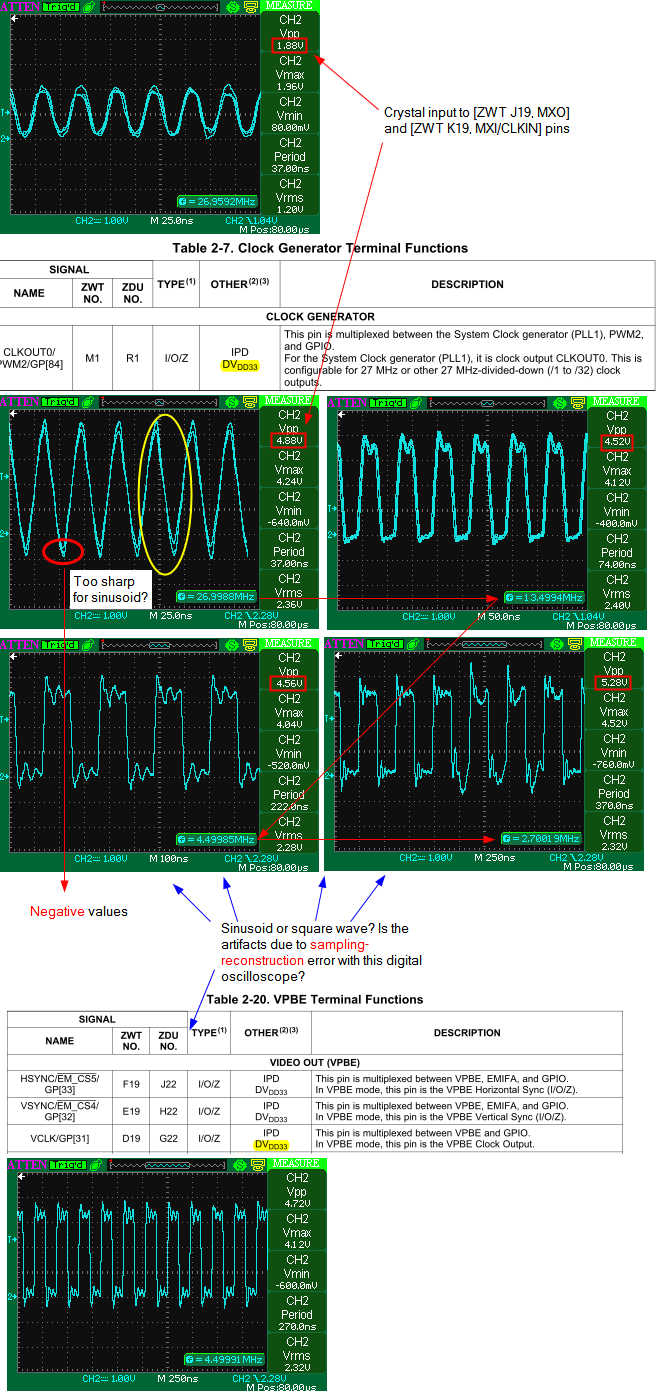Hi,
I would like to ask a question with DM6437 clock output.

For two clock outputs: (1) CLKOUT (2) VCLK:
Although datasheet both listed their voltage group as IPD-DVDD33, the actual output voltage as measured by oscilloscope significantly exceeds that value.
In addition, there are also negative values when CLKOUT output 27MHz without division. Although at this time the frequency is the same as the crystal input, VPP has changed from 1.8V to 4.88V, and the most negative value being -640mV.
Question 1
It's reasonable for the amplitude to change since the output clock signal has gone through the internal circuit of DM6437. However, why would VPP be approximately 1.5 times DVDD33?
Question 2
Is the output square wave or sinusoid?
- When clock division is not used, the 27MHz output looks close to sinusoid but too being too sharp.
- When clock division is used:
- 13.5MHz: there is obvious slope as well as somewhat "flat" top, and the waveform is halfway between sinusoid and square.
- 4.5MHz and 2.7MHz: looks purely square wave.
Where there looks like a transition from sinusoid → square wave, as frequency ↑?
Zheng
